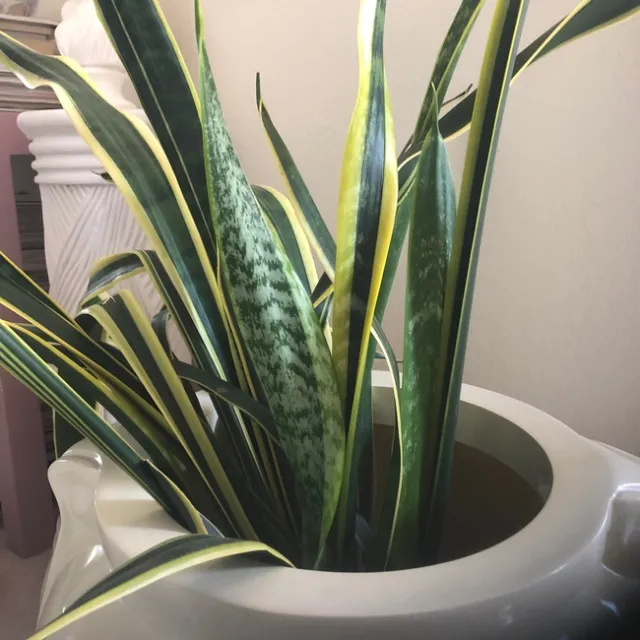
Snake Plant
By Andrea Peck UCCE Master Gardener
Common Name of Plant: Snake Plant
Scientific Name: Sansevieria trifasciata
Planting Area: USDA Zone 9-11
Size: 28''-35''
Bloom Season: Varies
Exposure: Medium Light
Pruning Needs: None.
Water Needs: Low
Snapshot: Sansevieria trifasciata is a perennial evergreen that is hardy and easy to grow. It has many nicknames, including, snake plant, mother-in-law's tongue, and viper's bowstring hemp. It has long, blade-like leaves that straighten as it grows from curling rosettes from the soil. Bold and architectural in appearance, it is well-suited in modern décor. When caring for S. trifasciata, a minimalist approach is best. S. trifasciata has few needs, but well-draining soil is a must. When potting, use succulent or cactus mix combined with potting soil to prevent the roots from rotting. Fertilizer needs are minimal as well---a bit of compost or vermicompost will suffice, but if you prefer, a serving of houseplant food during spring or summer will provide needed nutrients. It is generally regarded as a low-light plant, but there is some debate on this. Some say that a sunny location promotes growth and flowering, yet very direct, hot sun will lead to quick burning of the leaves. Frost, direct light from a bright window, and overwatering (or high humidity) are like kryptonite to this plant.
Avoid that trifecta and your plant should thrive indoors or, in mild climates, outdoors. S. trifasciata will grow upwards of 3 feet in under right conditions. It spreads underground by rhizomes so in time, you will see little offsets appear. Those are easily disengaged from the main plant for propagation. Getting this plant to flower can be challenging, but more light exposure may prompt bud development. The flowers are whitish-green and scented. Use caution around pets---S. trifasciata is mildly toxic if chewed. This is a great plant for travelers who want low-maintenance greenery, but its most beneficial contribution is that it gives off oxygen at night---a rarity in the plant world---and it filters formaldehyde, trichloroethylene, xylene, toluene, and benzene from the air.

